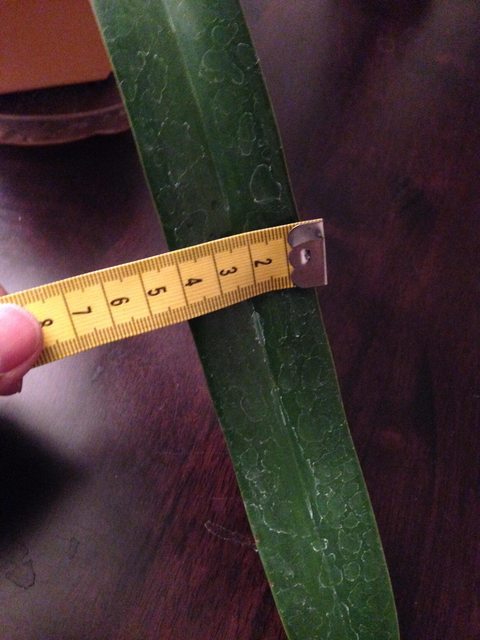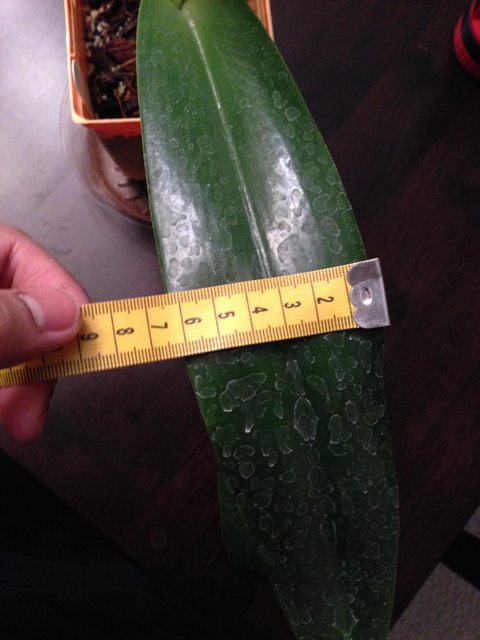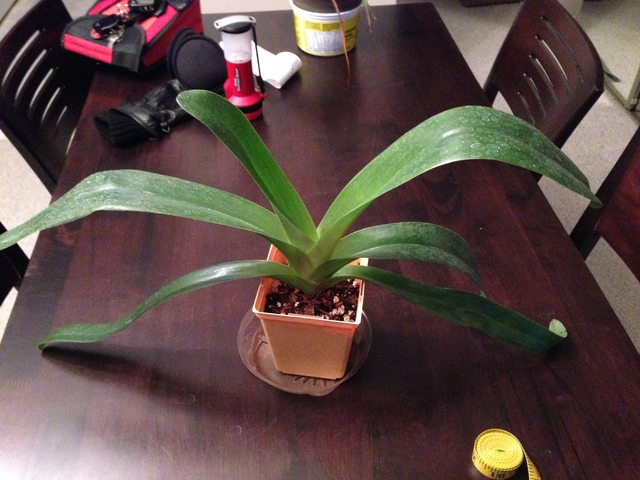naoki
Well-Known Member
Very nice photos, Paphioboy! It is difficult to judge the intensity from most photos. There are only 2 photos with EXIF intact, and the first P. volonteanum seems to be pretty dim around 125-200fc, and roths are even dimmer, 60-100fc. The date/time stamp was modified, so I don't know if these photos were taken what time of the day.
Ray's calculater (http://www.firstrays.com/measurelight.htm) seems to be pretty close to my high-end incident light meter (when I use white paper + D300). Since the photos are not using white paper, I added about 1.5 stops to EXIF data.
That is amazingly small amount of light (even for constant light source). Your setup looks like some light is coming from the window. Do you think that they are getting fair amount of natural light or is the artificial light main source? I'm giving 2-4 times more per day (even for Sigmatopetalum)...
Thanks for the citation, the 2nd one is very interesting. It is amazing how CAM can evolve repeatedly, which tells us how important the interaction between light, water, humidity, and temp. I think there is another paper which checked Brachy (their appearance is closer to CAM), and concluded that they are not CAM, neither.
Yes, field measurement would be great. Portable IRGA (like Li-Cor 6400) is quite expensive (ours are like $20k), though. But I agree that it would be nice if someone can measure PAR or even just lux/fc with a data logger (pretty cheap). I did quick literature search for some field measurements of Paphs, but I haven't found one yet.
For rough estimation of PAR (convert fc to micro mole/m^2/s), here is a couple conversion factors: http://www.apogeeinstruments.com/conversion-ppf-to-foot-candles/
The site says it is PPF, but I think that if you use fc, you get PPFD (photosynthetic photon flux density). micromole = micro E.
Ray's calculater (http://www.firstrays.com/measurelight.htm) seems to be pretty close to my high-end incident light meter (when I use white paper + D300). Since the photos are not using white paper, I added about 1.5 stops to EXIF data.
My roth, stonei, lowii and philippinense flowered under 400-500 foot candles. All single growths and grew second growths and starters before they flower. 2 flourescent light bulbs with a distance of 18 inches from the apex of the leaves. The lights are on for 8 hours a day.
That is amazingly small amount of light (even for constant light source). Your setup looks like some light is coming from the window. Do you think that they are getting fair amount of natural light or is the artificial light main source? I'm giving 2-4 times more per day (even for Sigmatopetalum)...
Paph insigne and parishii are C3 plants, see: http://aob.oxfordjournals.org/content/54/4/583.full.pdf .
A phylogenetic analysis suggests all the Cypripedioideae are C3 (while Catts seem to be mostly CAM): http://www.plantphysiol.org/content/149/4/1838.full
So, because I'm something of an empiricist, if you have a wild location of Paphs near you, spend a day tracking the light intensities that the plants endure. (There are handy gadget that can actually measure photosynthesis i the field but that is perhaps too much to ask...)
Thanks for the citation, the 2nd one is very interesting. It is amazing how CAM can evolve repeatedly, which tells us how important the interaction between light, water, humidity, and temp. I think there is another paper which checked Brachy (their appearance is closer to CAM), and concluded that they are not CAM, neither.
Yes, field measurement would be great. Portable IRGA (like Li-Cor 6400) is quite expensive (ours are like $20k), though. But I agree that it would be nice if someone can measure PAR or even just lux/fc with a data logger (pretty cheap). I did quick literature search for some field measurements of Paphs, but I haven't found one yet.
For rough estimation of PAR (convert fc to micro mole/m^2/s), here is a couple conversion factors: http://www.apogeeinstruments.com/conversion-ppf-to-foot-candles/
The site says it is PPF, but I think that if you use fc, you get PPFD (photosynthetic photon flux density). micromole = micro E.






